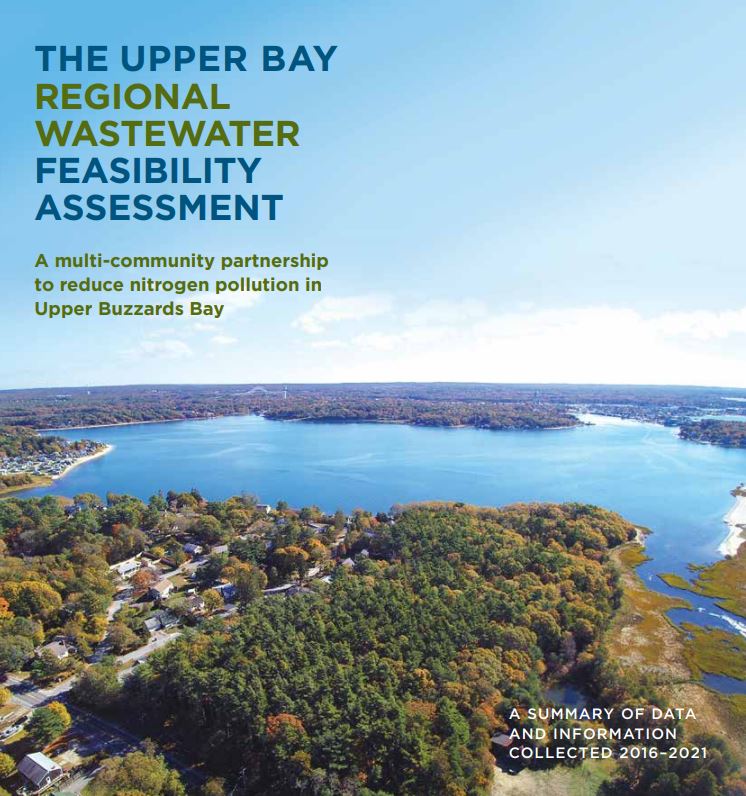Evaluating Options to Reduce Nitrogen Pollution in Upper Buzzards Bay
March 21, 2022

BETA Group, Inc. was proud to be part of the Buzzards Bay Coalition Team that developed and issued “The Upper Bay Regional Wastewater Feasibility Assessment” report earlier this month. The report presents a long-term solution for improved wastewater management for several communities that border Buzzards Bay in Massachusetts. The Upper Buzzards Bay project is a regional concept that brings together community partners to capitalize on a unique opportunity to jointly solve water quality issues in Buzzards Bay.
The majority of Buzzards Bay’s watershed is served by on-site septic systems that do not treat for nitrogen. The septic system effluent travels from its leach field into the groundwater and ultimately discharges into Buzzards Bay. Nitrogen is the primary pollutant affecting coastal waters in the bay, and nitrogen from these residential septic systems is a contributing source. Increased levels of nitrogen decrease the water quality of the bay, creating low levels of dissolved oxygen and low water clarity which can be devastating to a marine ecosystem.
The project introduces the concept of upgrading the existing Wareham Wastewater Treatment Facility into a regional facility, eliminating many of these on-site septic systems. The increased wastewater treatment capacity warrants relocating the effluent discharge from the current location at the Agawam River to the Cape Cod Canal. The regional facility and the relocation would effectively reduce nitrogen pollution to the entire upper Buzzards Bay area by an estimated 100,000 lbs/year by eliminating the pollution from 3,457 septic systems and three existing wastewater discharges.
BETA helped the Buzzards Bay Coalition evaluate options for relocating the Wareham Wastewater Treatment Facility’s effluent discharge pipe. The recommended 24-inch force main spans approximately 4.4 miles from the Wareham Wastewater Treatment Facility to the Cape Cod Canal. The evaluation considered different routes and construction techniques, including traditional open-cut construction as well as trenchless construction. Challenges include railroad right-of-way wetland areas, private property, crossing of the Cohassett Narrows, and a well-travelled Route 6/Route 28.
The report is sure to help the local communities plan for their long-term wastewater needs, protect their coveted natural resources, and put the proper financial mechanisms in place to assure success for their wastewater strategies.
